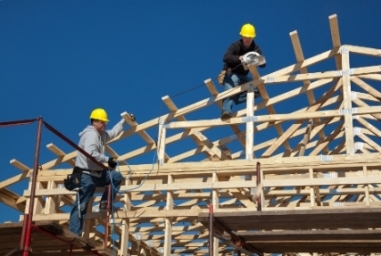The American construction market is on the up – quite literally. The past few months have seen steady growth in the construction of rental apartment properties in key markets like Chicago, Los Angeles and Atlanta.
Architecture firms continue to report strong business conditions, with billings on a positive trajectory for the last several months, according to the American Institute of Architects’ (AIA) Architecture Billings Index (ABI). And the construction insurance market is enjoying the fruits of this success.
Celebrate excellence in insurance. Nominate a worthy colleague for the Insurance Business Awards!
“The construction insurance market is very strong. In particular, we are seeing a lot of apartment and infrastructure work at the moment,” said Larry Jackson, senior vice president of Wrap Up Insurance Solutions. “We are seeing a steady growth of apartment rental properties in key markets, as opposed to the ‘for sale’ condos or town homes. There is a significant volume of companies out there building apartments.”
The rental property market is booming in order to cater for younger generations who are struggling to get a foot on the property ladder. Developers are meeting this demand by building affordable properties and rental apartments. But what happens if these rental properties are later put on the market for sale?
“A key thing about the residential construction market is the element of conversion from rental to ‘for sale,’” Jackson told Insurance Business. “This is often a gap and an underwriting element that has to be closely reviewed to determine whether a policy is going to carry an apartment conversion exclusion, which would certainly impact the premium.
“It’s probably the number one concern that we look at with our clients. Any broker working with a developer needs to look hard at any potential conversion element within the Statute of Repose, as well as any indemnification issues, conditional programs and statutory requirements that might exist in the geographic area the project is being built in. The market is becoming more and more structured, so understanding rules and regulations is key.”
As well as staying on top of regulatory requirements, brokers are also advised to continue learning about construction products. The quality of construction projects in the US remains high, according to Jackson, but new products can bring new risks and underwriting challenges to the market.
Jackson added: “Brokers need to be mindful of any product restrictions a policy might contain. Carriers are notorious for being reactive to claims and trying to create endorsements to mitigate their exposure and loss. You need to be mindful of the product and looking for any new exclusions that may crop up from time to time.”
Related stories:
Company ignores cease and desist selling insurance orders
Wrap-up insurance solutions helping the little guys compete


